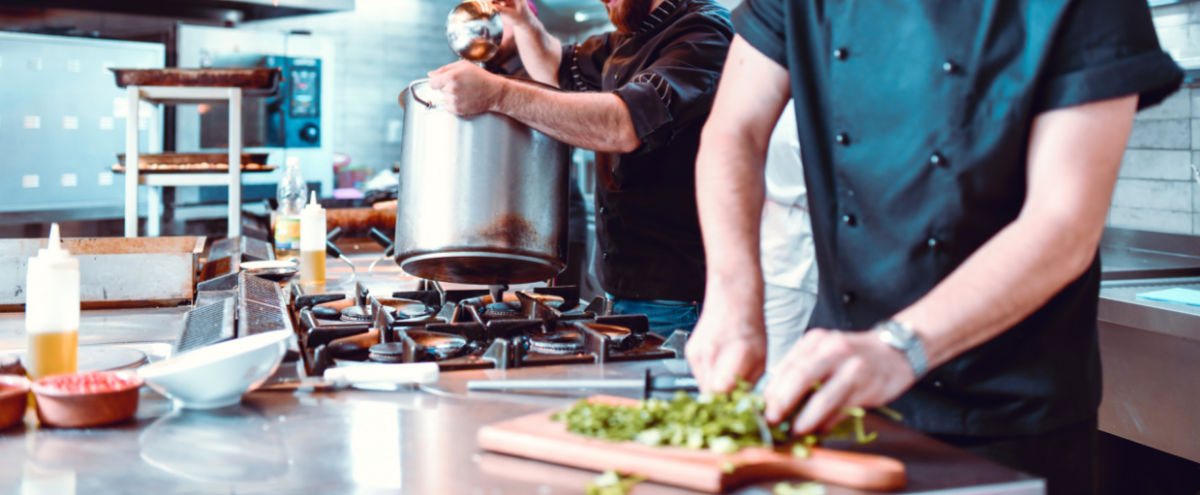
28 Jul Safety in the Food Service Industry
Written by Safety Professional at SOS Safety Solutions, Brennan Perry.
The food service industry presents a variety of challenges pertaining to employee safety. Exposures can include lacerations, burns, strains, sprains, and contusions. Food service employees are expected to prepare meals and beverages for customers and patrons quickly.
This sometimes creates a culture that places safety at the bottom of the priority list in favor of customer satisfaction. While it may seem counterintuitive, a safe kitchen will be more productive and will attain higher customer satisfaction than an unsafe kitchen.
Knife Safety
Cuts and lacerations are typically considered part of the territory in the food service industry. These types of injuries do not need to occur.
There are many ways to prevent cuts and lacerations, including best practices and personal protective equipment when necessary.
- Never leave knives out when you are done using themUnattended knives are hazardous as coworkers may not be aware that they are there and may strike the blade
- Do not place knives in the sink
- Always cut away from the body
- Keep knives sharp
- When cleaning commercial slicers cut-resistant gloves are recommended
Burns
Heat is critical to preparing meals. There are many different pieces of equipment used to cook or heat food including stoves, fryers, grills, and ovens. Caution and respect must be used when cooking, frying, grilling, etc.
- When frying it is imperative to make sure food is free of any water before being lowered into oil to avoid excessive spattering or violent reactions
- Food should be placed in a basket and lowered into oil, not thrown in from heights
- Oven mitts or 100% cotton towels should be used when handling hot pans, skillets, baking sheets, etc.
- Do not leave burners on when not in use
Slips, Trips, and Falls
Slips, trips, and falls are a constant challenge in a commercial kitchen. The combination of potential spills, aerosolized oil from frying, sauteing, or grilling and the hustle and bustle of a busy kitchen are a recipe for disaster. Slips, trips, and falls are completely preventable and should not be an accepted part of the industry.
- Basic housekeeping is the best defense against these types of incidents
- Anti-slip shoes are recommended to be a requirement to be in the kitchen area
- While not a quick fix, non-slip floor coatings may be considered to improve the overall slip resistance in the area
Strains, and Sprains
Another injury type that may be common in the food industry is strain and sprain type injuries. Food shipments and deliveries typically include large heavy boxes, cans, and bags. These can all present different challenges when unloading trucks and stocking freezers, coolers, and shelves.
- Whenever possible use tools and equipment such as a dolly, hand cart, etc. to assist with the transportation of product to its destination
- Prepare for the physical activity of lifting and carrying products
- When it is time to lift items, remember to use proper body mechanics
While the goal of the food service industry is customer satisfaction, it is important to put employee safety first. Without employees, the service industry cannot thrive. Safe employees will be able to provide the level of service required to attain the satisfaction of the customer.
To read the full version of Safety in the Food Service Industry, download the whitepaper below.





No Comments